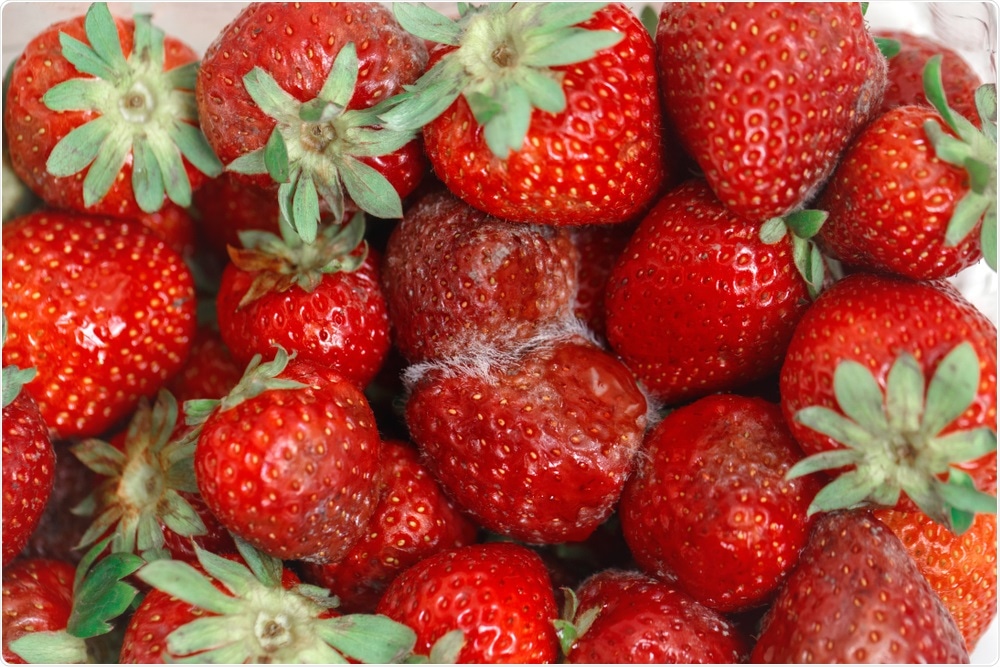Agricultural food products such as meat, fruit, and vegetables can quickly perish due to a range of factors that cause their deterioration.

Image Credit: Anna Kraynova/Shutterstock.com
Physiological factors alter texture and moisture causing bruising, for example, while biochemical factors such as oxidation and microbial factors also contribute to rot and spoilage.
Food safety and quality tests both before and after harvest are essential to identifying quality- diminishing defects before product distribution and sale to consumers.
Detection of physiological damage before items are gathered helps producers implement preventative methods to stop future damage, while detection following product collection helps people involved in packaging and retail to ensure the items meet consumer standards.
Detection of defects also saves costs by preventing the transport or storage of low-quality items and helping producers devise strategies for preventing quality loss in the future.
The rapid deterioration of fresh products demands challenging preservation methods such as pesticide and additive use to delay quality loss and extend shelf life.
The development of non-destructive detection tools has afforded producers rapid, easy to operate and cost-efficient methods for ensuring the safety and quality of items without any negative effects on productivity.
A comprehensive review recently published in the journal Trends in Food Science & Technology has examined the applications of an optical, non-destructive tool called the Biospeckle laser technique for food safety and quality assurance, as well as the evaluation techniques used to assess its activity and the challenges presented when using the tool.
What does analysis by biospeckle involve?
The food item is illuminated and the interference introduced by backscattered light generates a “speckled” pattern that informs on the biological and physical features of the sample.
Examples of applications include the identification of aging and bruising and the detection of trace metals and bacterial and fungal growth.
Agricultural engineering expert Dr. Pandiselvam from the ICAR-Central Plantation Crops Research Institute (CPCRI) in Kerala and colleagues say the activity intensity of biospeckle “is mainly measured as a correlation of irradiance as a function of time.”
Their review includes a comprehensive analysis of the techniques commonly used, with examples including the Absolute Value Difference and Inertia Moment methods used for quantitative analysis and the Fujii and Generalized Difference methods used for qualitative analysis.
The sources of the activity these methods analyze are changes in processes such as cell division, cell growth, and organelle movement.
Examples of major applications the team reviews include ripening and maturation monitoring, disease and defect detection and analysis of seed viability.
The challenges and limitations
The authors say the main limitations their review identified that need to be addressed for maximal adoption of biospeckle are light and noise interference and a lack of method standardization for activity measurement.
Pandiselvam and team stress the importance of overcoming the light and noise interference for outdoor use of the technique.
They say more studies are needed to address this issue but also point out that using “a dark background around the laser and the digital camera” could eliminate light interference and that “the noise problem can be solved by quick measurement methods, which uses only one image or a small group of images to evade the mechanical production of noise interference.”
They also say more specific studies are needed to address the lack of a standardized method: “There should be a well classified and organized approach for standardizing the methods used in the analysis and comparison of biospeckle phenomenon.”
Biospeckle in the future
The team suggests that the effects surface characteristics and tissue changes have on the biospeckle could provide a way of detecting diseases that arise during storage.
Other areas where they suggest further research is needed include the following:
- The thickness of the edible coating on the surface of the fruit
- The physicochemical properties of products following nonthermal and/or thermal processing
- The microbial population and level of pesticide residue on product surfaces
- The browning effect on minimally processed fruits
- The maturation of seasonal fruits
- Seed viability
- Potential for food authentication
Other potential areas include detecting moisture in agricultural products and predicting changes in moisture when drying and processing fruits and vegetables.
This non-destructive tool usage can be further utilized for more applications in the quality and safety evaluation of food products as well as in other areas,”
Journal reference:
Pandiselvam R, et al. Biospeckle laser technique – A novel non-destructive approach for food quality and safety detection. Trends in Food Science & Technology 2020;97: p 1-13 https://doi.org/10.1016/j.tifs.2019.12.028